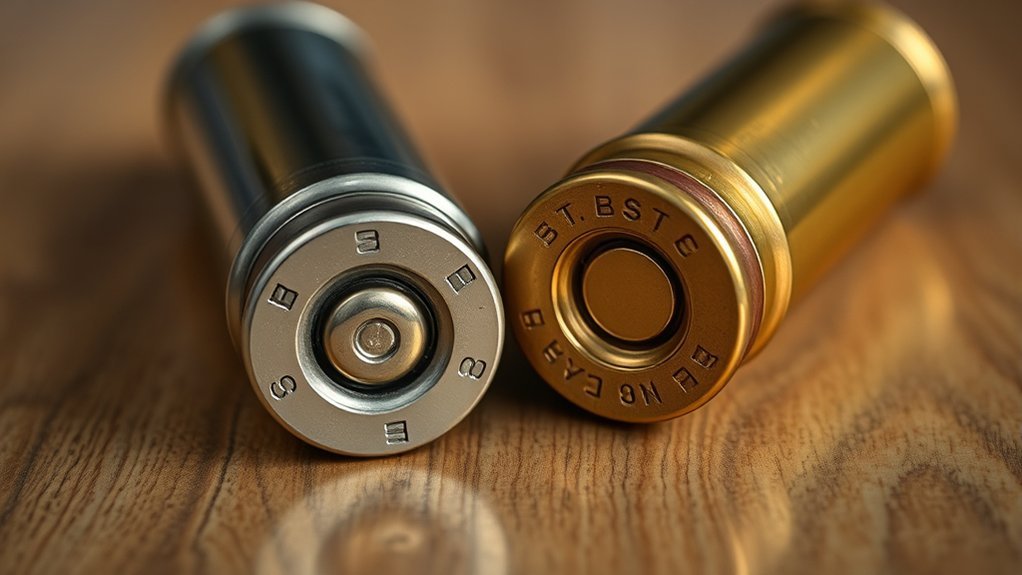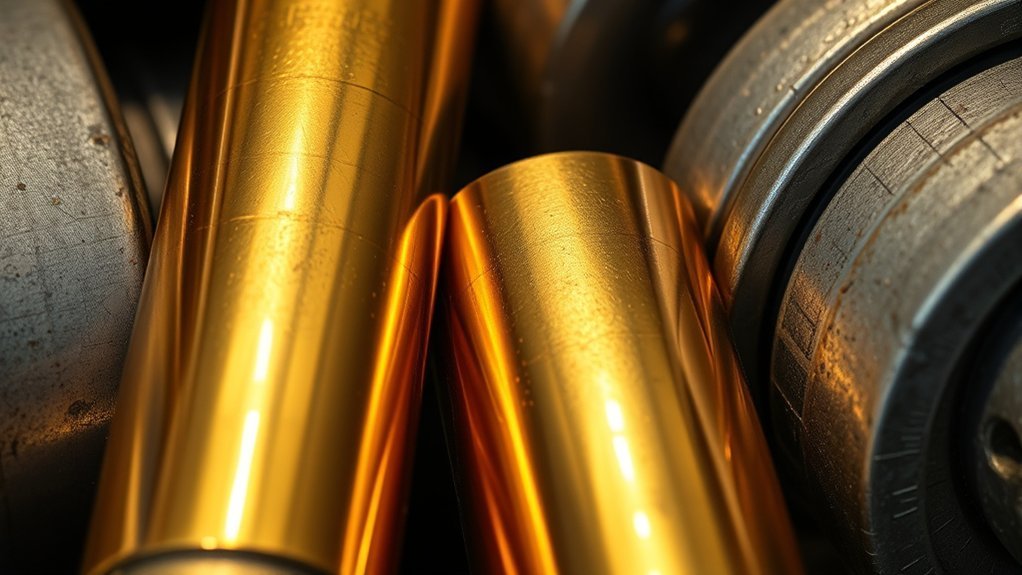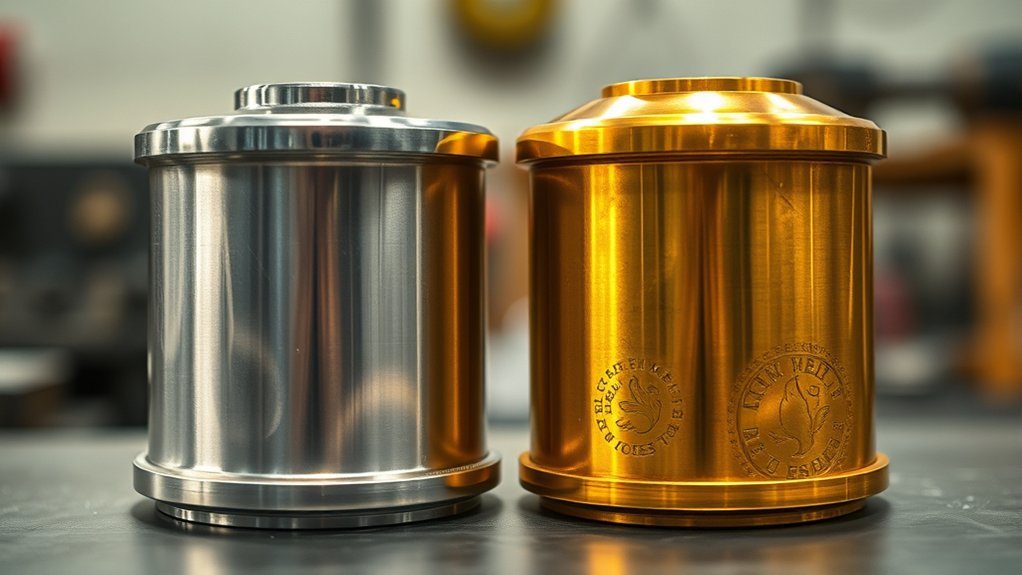When it comes to choosing between steel and brass casings, understanding the pros and cons of each can greatly impact your shooting experience. Steel casings offer affordability and lightweight options suitable for high-volume use, while brass casings boast durability and excellent reloadability. However, both materials come with their own limitations that could affect your firearm’s performance. Which option aligns better with your shooting style and budget? The answer may surprise you.
Overview of Steel Casings

When you consider ammunition options, steel casings offer a cost-effective alternative to traditional brass. These casings are typically made from a combination of steel and a polymer coating, enhancing their resistance to corrosion while maintaining structural integrity. They’re generally lighter than brass, allowing for easier transport and handling. Additionally, steel casings are often less expensive to manufacture, making them an attractive choice for high-volume shooters or those on a budget. However, it’s essential to note that the hardness of steel can lead to increased wear on chamber and extractor components in firearms, potentially affecting longevity and performance. Therefore, while steel casings present financial advantages, they require careful consideration regarding compatibility with your firearm’s specifications.
Advantages of Brass Casings

The reliability of brass casings makes them a preferred choice among many shooters and firearms enthusiasts. Brass casings offer several distinct advantages that enhance performance and usability.
| Feature | Brass Casings | Benefits |
|---|---|---|
| Durability | High | Resists deformation under pressure |
| Reloadability | Excellent | Can be reloaded multiple times without damage |
| Corrosion Resistance | Superior | Maintains integrity over time |
| Heat Conduction | Good | Helps in maintaining consistent chamber temperatures |
With these characteristics, brass casings provide exceptional performance in a variety of shooting scenarios. Their ability to be reloaded efficiently not only saves you money but also contributes to sustainable shooting practices. Overall, brass casings are a reliable and effective choice for serious shooters.
Drawbacks of Steel Casings

Although steel casings are often marketed as a cost-effective alternative to brass, they come with notable drawbacks that can impact performance and reliability. One major concern is their tendency to rust, especially in humid conditions, which can compromise ammunition integrity. Additionally, steel casings are less malleable than brass, increasing the risk of extraction failures during ejection. This can lead to operational issues in semi-automatic and automatic firearms. Moreover, steel casings may not expand properly upon firing, resulting in poor sealing and reduced pressure. Finally, the potential for increased wear on your firearm’s chamber and extractor due to the hardness of steel can result in higher maintenance costs over time. Overall, these factors warrant careful consideration before choosing steel over brass.
Limitations of Brass Casings
While brass casings are often praised for their performance and reliability, they do come with limitations that can affect overall ammunition efficiency. One significant drawback is their susceptibility to corrosion, especially in humid environments, which can compromise integrity and function. Additionally, brass is softer than steel, leading to potential deformation during cycling, particularly in semi-automatic platforms. This softness also results in less durability under high-pressure loads, limiting the number of reloads you can safely perform. Furthermore, brass casings tend to be more expensive, impacting your budget for bulk shooting. Finally, they require more careful handling and cleaning, as they can tarnish and accumulate residue if not properly maintained. These factors may influence your choice in specific shooting scenarios.
Choosing the Right Casing for Your Needs
When selecting the right casing for your needs, it’s essential to contemplate factors like your shooting environment, budget, and intended use. If you’re shooting in harsh conditions or engaging in high-volume training, steel casings may suit you better due to their cost-effectiveness and durability. However, if you prioritize reliability and smooth feeding in semi-automatic firearms, brass casings are typically the better choice. Consider your reloading plans as well; brass is reusable, while steel is often not. Ultimately, your choice should align with your financial constraints and performance requirements. Assess the trade-offs carefully, and select a casing that complements your shooting style and enhances your overall experience.
Conclusion
In the domain of ammunition, choosing between steel and brass casings is like selecting a trusty steed for your journey. Steel, the swift and economical horse, can gallop through high-volume fields but may rust in the rain. Brass, the resilient and steadfast companion, offers endurance and reliability, though it comes at a higher cost. Ultimately, your choice reflects your path—whether you seek the cost-effective speed of steel or the enduring strength of brass, tailor your selection to your shooting aspirations.

